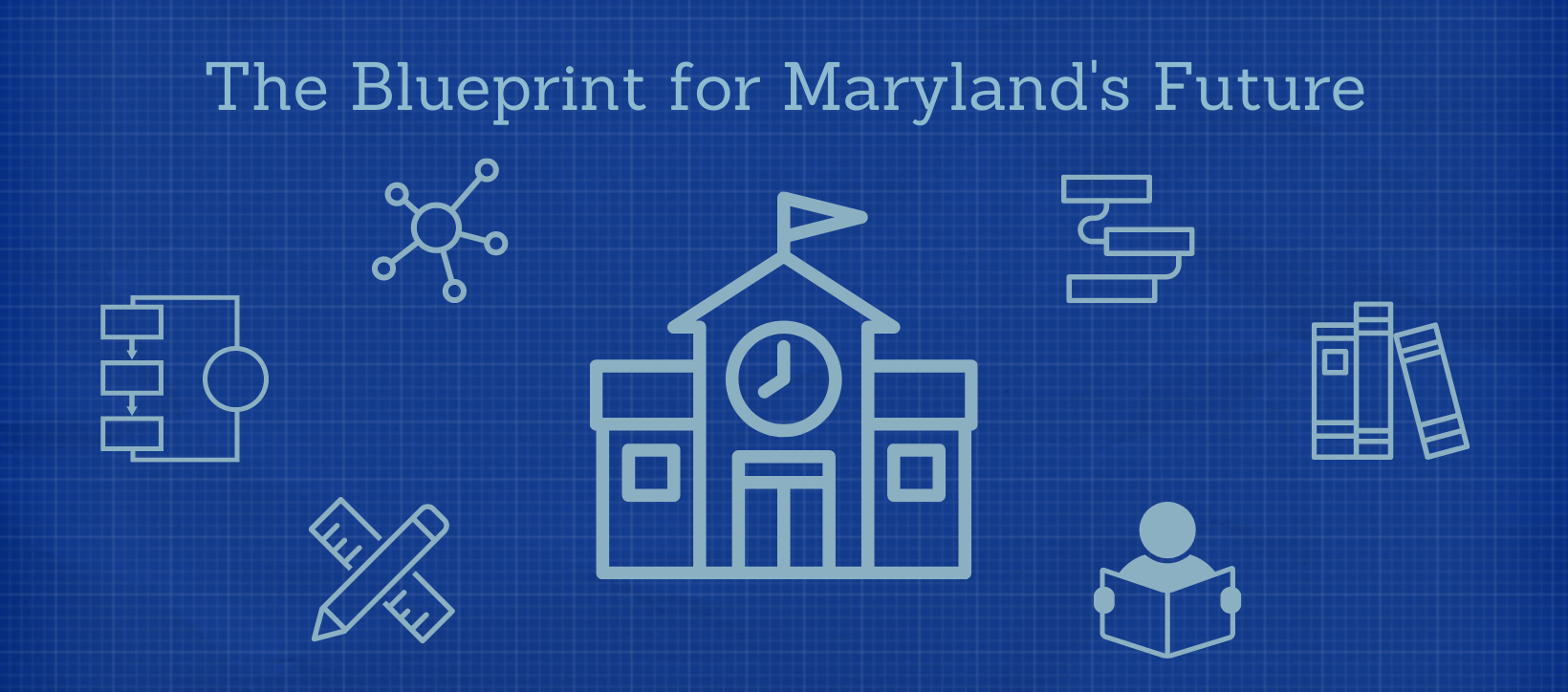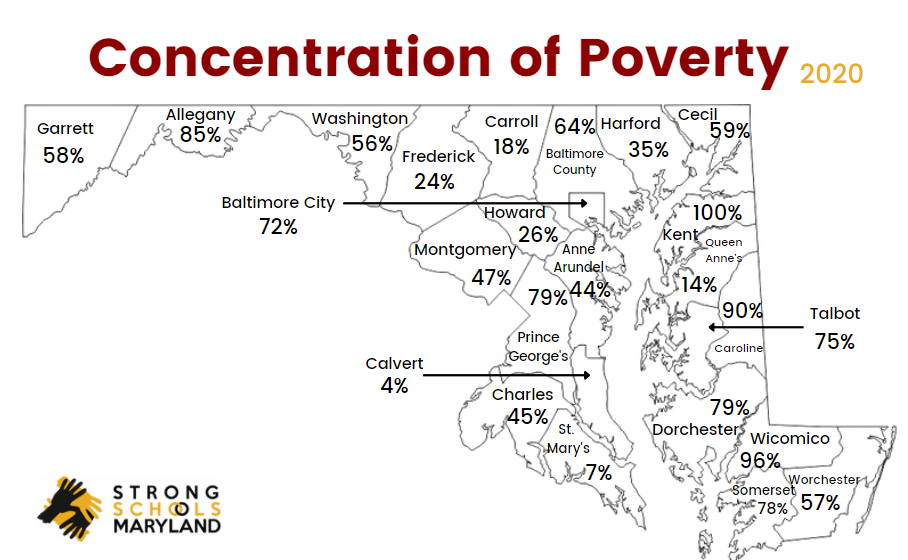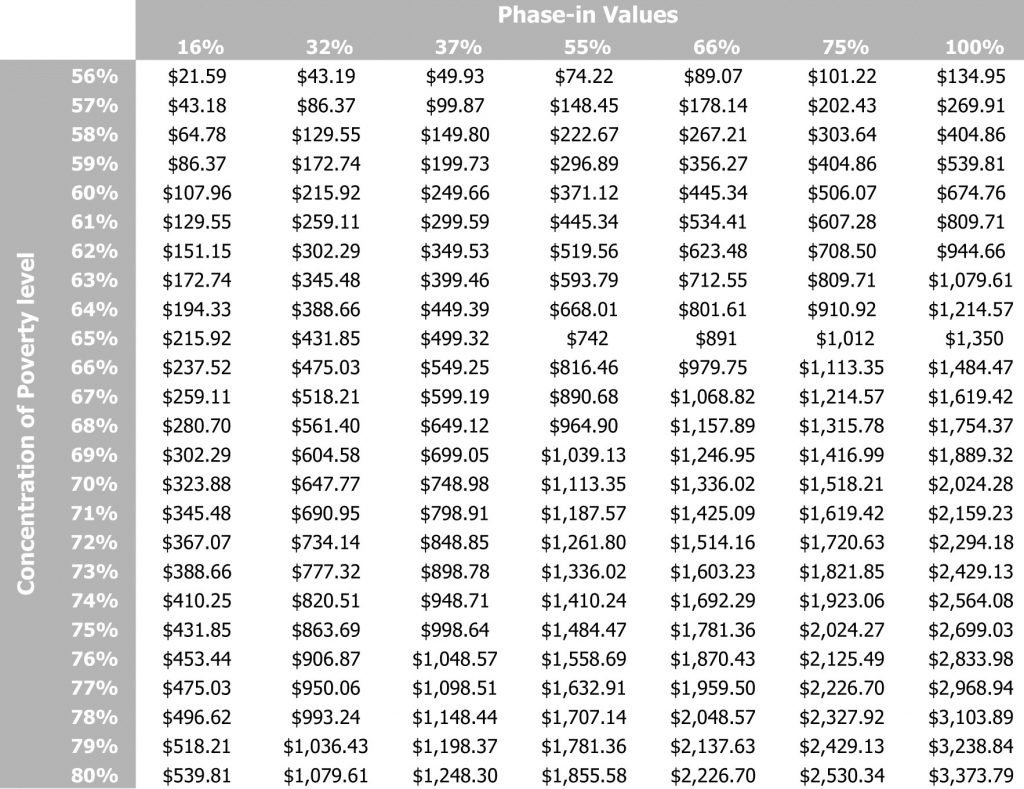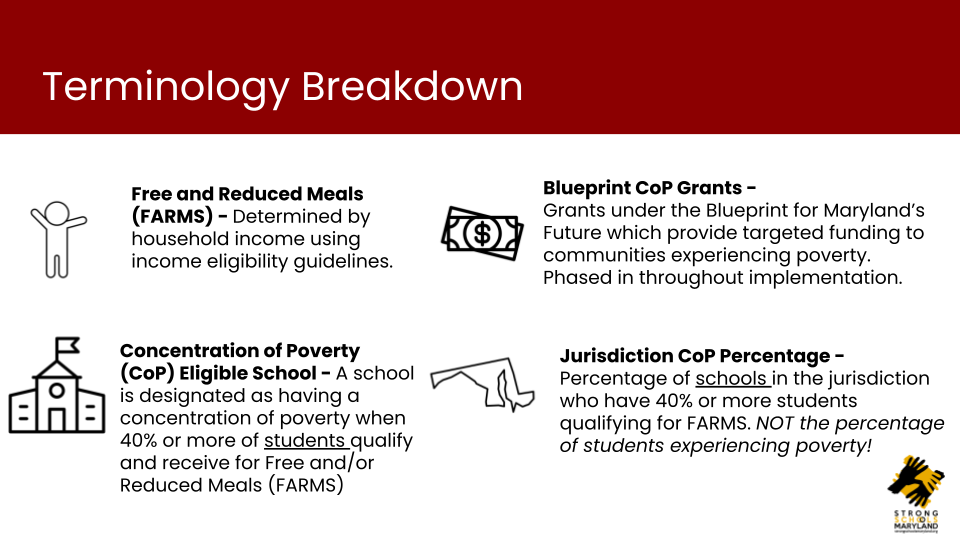Blueprint for Maryland’s Future

Passed by the Maryland General Assembly in February of 2021, the Blueprint for Maryland’s Future has the potential to dramatically improve educational outcomes for some of the state’s most underserved youth. Among the many provisions included in the law, the blueprint introduces more equitable funding formulas for schools and support staff, allows for greater institutional flexibility to reflect local conditions, and expands early childhood education access. MOST was a strong supporter of the bill during the legislative process, and we remain focused on facilitating its implantation by providing information and resources to our partners in the OST community.
The Blueprint
The passage of the Blueprint for Maryland’s Future was a project years in the making. Amid criticism of Maryland’s education funding practices in the 2000’s, a statewide commission of education advocates, teachers, legislators and consultants was formed by the Maryland General Assembly in 2016 to address how schools can better prepare students for success in the modern workforce. Known informally as the “Kirwan Commission” after it’s chairman, the commission was tasked with scrutinizing the state’s education funding practices and making policy recommendation to improve the quality of Maryland’s schools.
In the following years, the Kirwan Commission released a series of reports outlining policy recommendations in 5 key policy areas: (1) pre-K access, (2) high-quality teaching staff, (3) college and career readiness, (4) more resources for at-promise youth, (5) accountability and oversight. Debate began on the Blueprint for Maryland’s future in 2019, with the bill largely drawing on the commissions recommendations. The Bill was passed by the Assembly in 2020 and became law in 2021 as the result of a veto override.
The law represents one of the most substantial investments in Maryland’s education system in decades, with the state allocating billions of dollars into Maryland’s public schools through 2030. Higher teacher pay, career counseling for every middle and high school student, and more equitable funding formulas targeting low-income schools are just a few of substantial improvements made to state education law. Now the hard work of implementing these ambitious policies begins. We will continue to post additional resources related to the various provisions of the law on this page in the coming months, and we encourage all stakeholders to sign up for our newsletter (linked at the bottom of the webpage) to stay up-to-date on all the resources we will be publishing, all of which can also be found in our Library.
The Concentration of Poverty Grant Toolkit
The Concentration of Poverty Grant provision of the Blueprint allocates funding to Maryland’s community schools for the purpose of hiring qualified personnel and providing additional services to students. To help community school stakeholders take advantage of this opportunity and navigate the complex funding formulas in the law, MOST has created the Concentration of Poverty Grant Toolkit. The document outlines the funding formulas for both personnel grants and per pupil grants within the CPG, opportunities for collaboration with Out of School Time, recommendations for funding implementation, and additional resources for community school stakeholders. The document can be viewed in its entirety by clicking the link below.
The Concentration of Poverty Grant Toolkit

Per Pupil Funding
The per pupil grant provides additional funding to eligible schools based on their concentration of poverty level, a value determined by the proportion of students receiving Free and Reduced Meals (FARMs) that attend the school. The dollar amount of the grant is determined by a funding formula outlined in the Blueprint. Using the formula, the value of the per pupil amount is determined by multiplying a school’s concentration of poverty level by the sliding scale upper limit ($13,495.15), then subtracting the sliding scale adjustment factor ($7,422.33). The latter two values scale with inflation.

The per pupil amount is phased in over time from FY 2022 through FY 2030 (see the table on page 6 of the CPG toolkit). The value of the per pupil grant is determined by multiplying the per pupil amount by the phase-in value, then multiplying the product by the number of eligible students (FARMs recipients).

Only schools with a concentration of poverty level greater than 55% are eligible for the per pupil grant. Schools with a concentration of poverty level between 55% and 80% subject to the per pupil funding formula, while those with a concentration of poverty level of 80% or more are eligible for the maximum per pupil amount ($3,374.48 per student in FY 2022).


Additional Resources
Blueprint for Maryland’s Future Full TextBlueprint Companion Bill Full Text
Policy Area Summaries
Funding Breakdown
Strong Schools Maryland
Maryland Education Coalition
Maryland State Education Association
